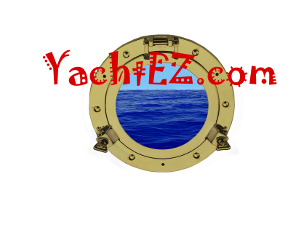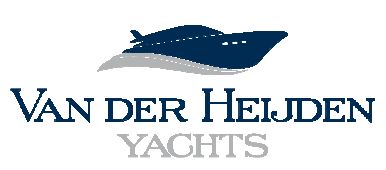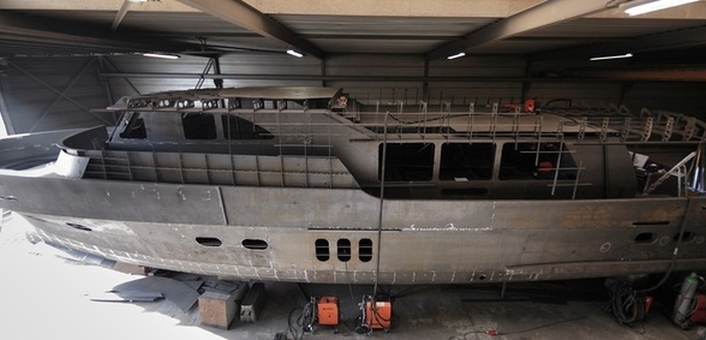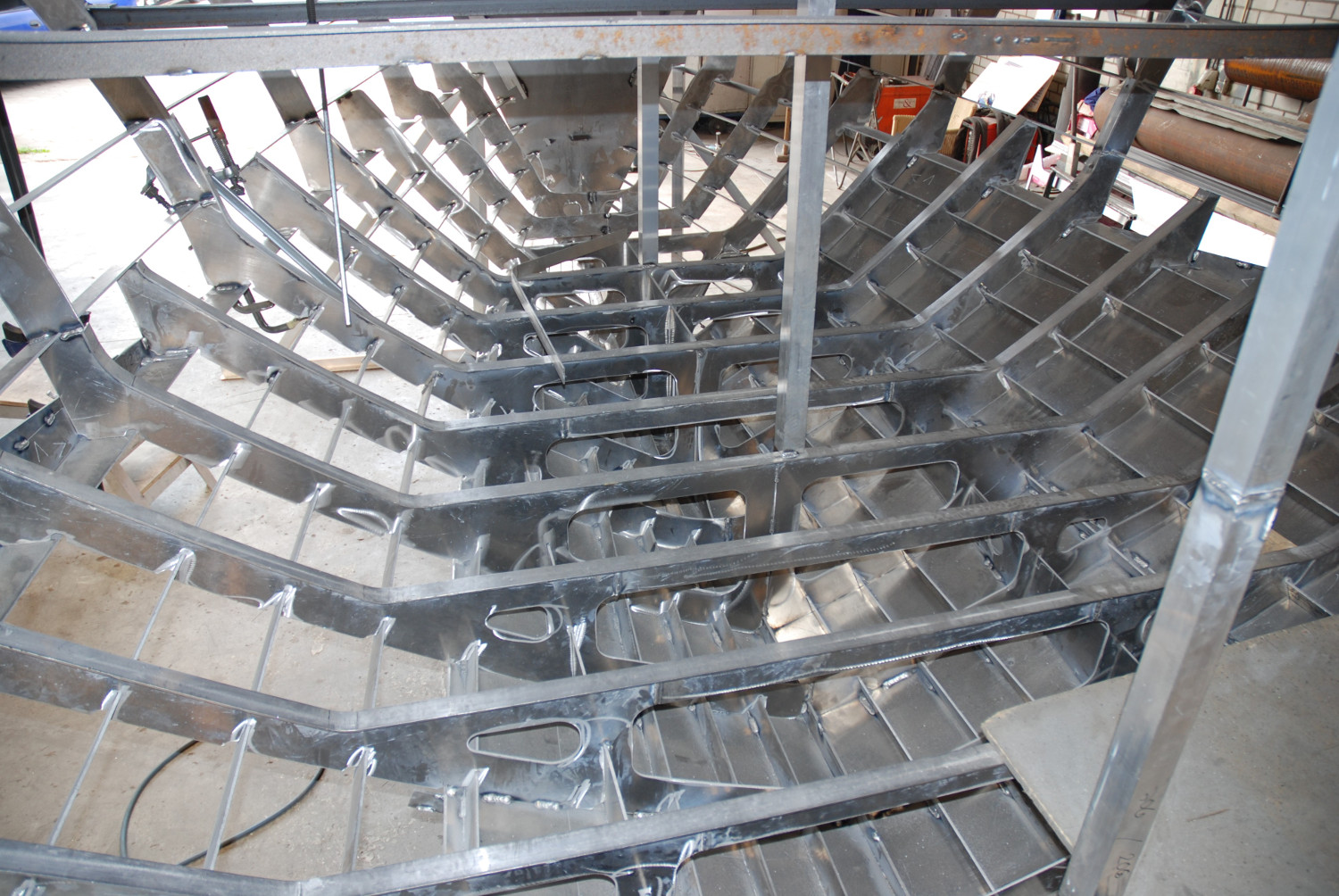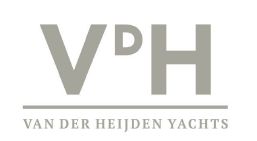VDH SUPERIOR LUXURY ALUMINUM/STEEL SERIES 2500
The VDH SUPERIOR 2500 is a conception grandfathered in from the success of the SUPERIOR 2000 and 2400.
As noted in this construction photo at the shipyard, she has a hard chine hull form, with LOA 25.10-mt, a Beam of 5.94-mt, displacement draft of 1.45-mt, fuel tank capacity of 8000-ltr, set to cruise long distances in comfort with style and grace on the open water.
The slender hull with flared bow and a gracious stern gives the ship a superior appearance with great sailing qualities. The interior is fully custom built, but with a capacity of 8-guests and 1-crew it’s possible to take long trips with a large group.
The VDH 2500 SUPERIOR is the flagship of the VDH SUPERIOR and DELUXE line of aluminum and steel vessels. VDH building a line that are ships in design and character, not lightweight composite boats of relatively the same size; the 2500 aluminum construction is equally fast on the water as her composite counterparts because of their hull design and power options purposely powered by CATERPILLAR USA Diesels, and is ideal to enjoy the weather… any weather you may face on your journey, in comfort, safety, and style.
The VDH 2500 SUPERIOR, like her EXPLORER cousin, is a rough water boat, built to withstand the harshest of sea evirons, originally designed for the North Sea off the coast of the Netherlands, she is no stranger to the harshest of sea conditions. She is perfectly suited for oceans of unpredictable character and nature like the South China Sea of the Southern Hemisphere and the South Pacific Rim off the coast of Australia, and with her long range cruising capability for fuel and refrigeration, gives Owner and Guests that assurance of safety at sea.
WHY ALUMINUM/ WHY STEEL
BUILDING IN ALUMINUM
Reasons why:
- For things that go bump in the night?For sheer longevityFor good resale valueFor repair abilityFor lightness combined with higher strengthFor the benefit of being able to build economically, without the penalty of having to build a costly mold first as with fiberglassFor the freedom of the smell of fiberglass and the dreaded osmotic blistersFor repair ability in ease of modification or collision repairFor performanceAnd most importantly, for the security of safe cruising on the open sea
- STRENGTH
 On a weight-by-weight basis, Aluminum alloy is stronger than steel. Strength-for-Strength, it weighs about half as m uch ans is 10-times more resilient. Aluminum has roughly twice the tensile strength of fiberglass at 46,000 lbs.per.sq.inch compared at 21,000 lbs.per.sq.inch. Unlike synthetic materials, Aluminum will not break, crack or splinter on impact. Collisions that would puncture a fiberglass boat will normally just dent an Aluminum one. Rather than starting the pumps the captain as the yard cut out the dimple and weld in a new plate the next it’s in the yard for routine maintenance. Nobody for sake of not fun, takes an unplanned swim, nor does the yacht suffer any down time.
On a weight-by-weight basis, Aluminum alloy is stronger than steel. Strength-for-Strength, it weighs about half as m uch ans is 10-times more resilient. Aluminum has roughly twice the tensile strength of fiberglass at 46,000 lbs.per.sq.inch compared at 21,000 lbs.per.sq.inch. Unlike synthetic materials, Aluminum will not break, crack or splinter on impact. Collisions that would puncture a fiberglass boat will normally just dent an Aluminum one. Rather than starting the pumps the captain as the yard cut out the dimple and weld in a new plate the next it’s in the yard for routine maintenance. Nobody for sake of not fun, takes an unplanned swim, nor does the yacht suffer any down time.
- LIGHT WEIGHT
Aluminum yachts in general are about 30% lighter than a similar size yacht built in fiberglass. Light weight means smaller engines, less fuel burned, and a longer range for the yacht and her passengers. Weight saved in the hull, decks, and superstructure can be traded for increased tankage, translates to mroe fuel and more water.
- NON-FLAMMABLE
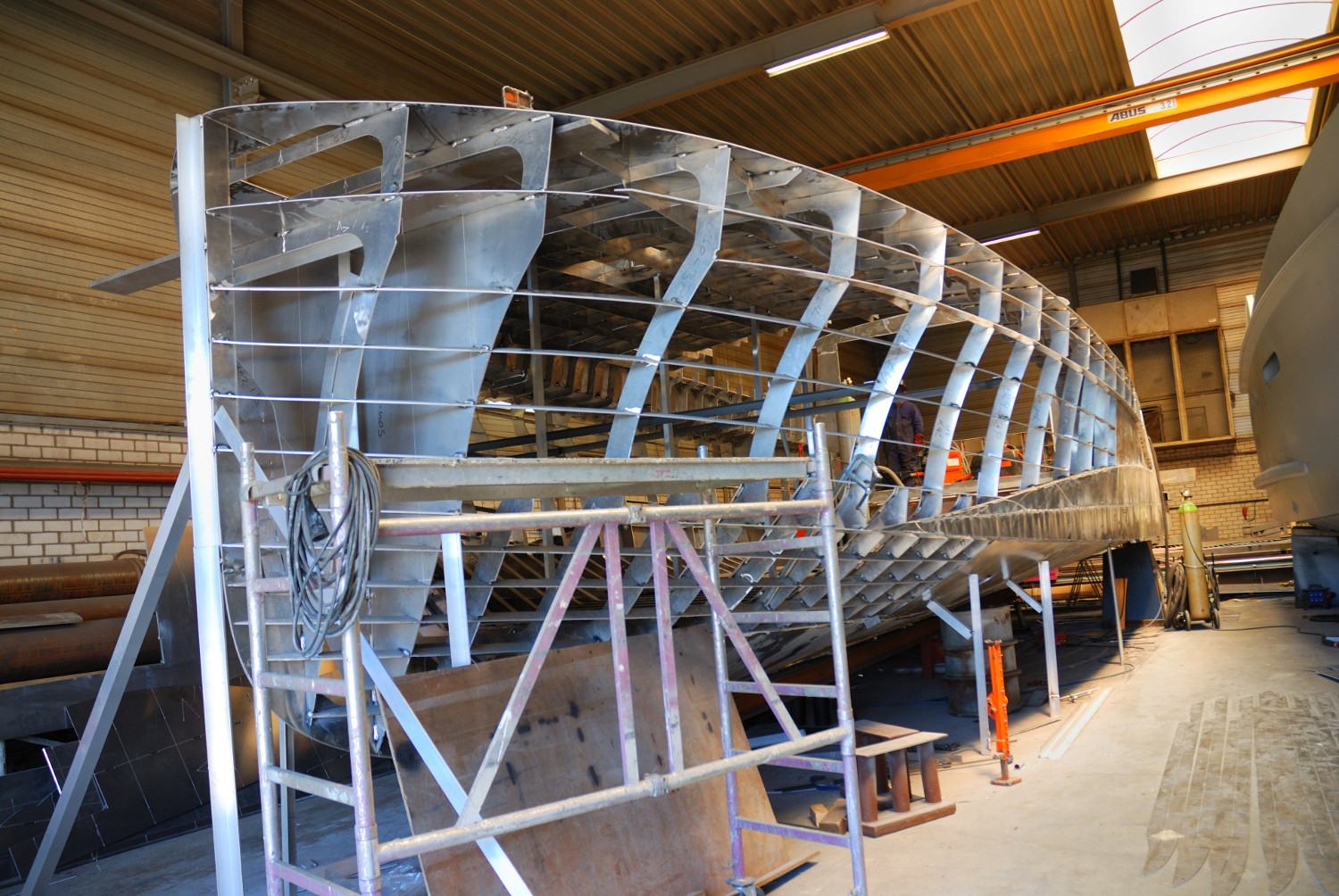 Aluminum, as defined by SOLAS (Safety of Life at Sea) convention standards, is non-flammable and non-combustible. Because of this, Aluminum yachts can be made to conform to new, stridter I.M.O commercial boat rules that are nevertheless appropriate for oceangoing vessels.
Aluminum, as defined by SOLAS (Safety of Life at Sea) convention standards, is non-flammable and non-combustible. Because of this, Aluminum yachts can be made to conform to new, stridter I.M.O commercial boat rules that are nevertheless appropriate for oceangoing vessels.
- CORROSION RESISTANT
The 5,000 series alloy used to build modern Aluminum vessels consist of Aluminum and magnesium, with a trace of silicon making it extremely corrosion-resistant. And except for cosmetic reasons, aluminum alloy doesn’t even have to be painted above the waterline. The unpainted metal reacts with air to form Aluminum-oxide, a hard protective coating that protects the underlying Aluminum. The bottom of the Aluminum hull only needs compatible anti-fouling paint to prevent growth.
- INTEGRAL TANKS
Aluminum yachts utilize fuel tanks which basically form a double-bottom adding to he safety by using he hull plating to form one or two sides of tghe tank. This also leads to weight savings, and keeps the fuel cool as well. This is a benefit not available on fiberglass hulls. Integral tanks built into the bottom structure also means a lower CG (Center of Gravity) making a more stable vessel.
[huge_it_slider id=”29″]

